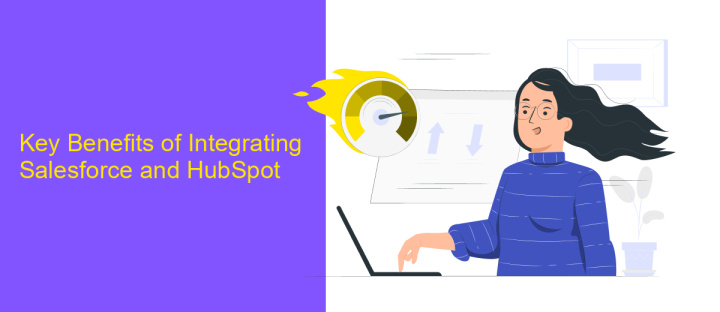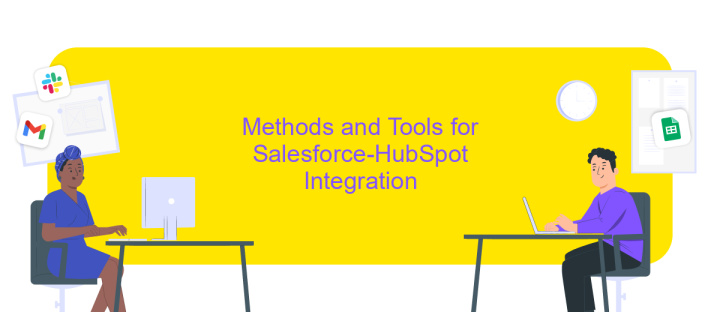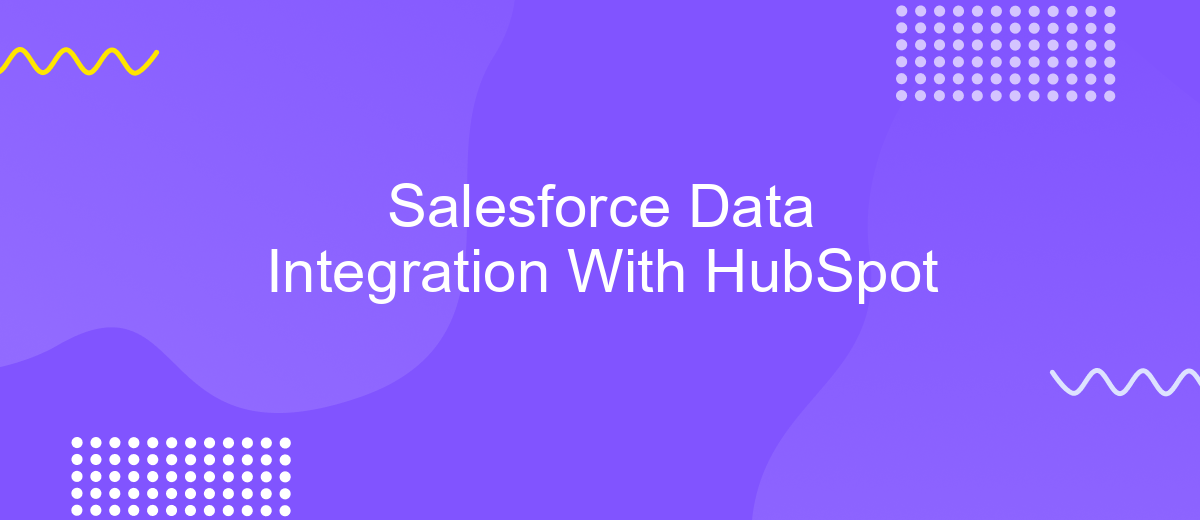Salesforce Data Integration With HubSpot
Integrating Salesforce with HubSpot can significantly enhance your business's data management and marketing capabilities. By seamlessly connecting these two powerful platforms, organizations can ensure a smooth flow of information, improve customer relationship management, and optimize marketing strategies. This article explores the benefits of Salesforce data integration with HubSpot, providing insights into how businesses can leverage this synergy to drive growth and achieve greater operational efficiency.
Understanding the Need for Salesforce and HubSpot Integration
In today's fast-paced business environment, integrating Salesforce with HubSpot has become essential for organizations aiming to streamline their operations and enhance customer relationships. Both platforms offer robust features, but when used together, they provide a comprehensive solution for managing sales, marketing, and customer service. By integrating these systems, businesses can ensure seamless data flow, eliminate data silos, and achieve a unified view of customer interactions.
- Improved data accuracy and consistency across platforms.
- Enhanced customer insights through synchronized information.
- Streamlined sales and marketing processes.
- Increased efficiency by reducing manual data entry.
- Better alignment between sales and marketing teams.
Ultimately, the integration of Salesforce and HubSpot allows organizations to leverage the strengths of both platforms, driving better decision-making and fostering a more collaborative environment. As a result, businesses can deliver more personalized experiences to their customers, improve lead conversion rates, and ultimately increase revenue. This integration is not just a technological upgrade; it's a strategic move towards achieving business growth and maintaining a competitive edge.
Key Benefits of Integrating Salesforce and HubSpot

Integrating Salesforce with HubSpot offers a seamless flow of data between two powerful platforms, enabling businesses to enhance their sales and marketing strategies. This integration ensures that both teams have access to the same customer information, leading to more personalized and effective communication. By having a unified view of customer interactions, companies can better track leads, manage customer relationships, and ultimately drive more sales. Additionally, the integration helps in automating routine tasks, saving time and reducing the risk of human error.
For businesses looking to simplify the integration process, services like ApiX-Drive can be invaluable. ApiX-Drive provides an easy-to-use interface for setting up integrations without the need for extensive technical knowledge. This tool can help streamline the data sync between Salesforce and HubSpot, ensuring that data is consistently accurate and up-to-date. By leveraging such services, companies can quickly reap the benefits of integrated platforms, improving efficiency and gaining a competitive edge in their industry.
Methods and Tools for Salesforce-HubSpot Integration

Integrating Salesforce with HubSpot requires a strategic approach to ensure seamless data flow and enhanced marketing and sales alignment. The integration can be achieved using a variety of methods and tools tailored to meet specific business needs. The choice of method depends on the complexity of the data and the desired level of automation.
- Native Integration: HubSpot offers a built-in integration with Salesforce, allowing for easy setup and synchronization of contacts, leads, and activities.
- Third-Party Tools: Platforms like Zapier or PieSync provide more flexible integration solutions, enabling custom workflows and data mappings between Salesforce and HubSpot.
- Custom API Development: For businesses with unique requirements, leveraging Salesforce and HubSpot APIs allows for highly tailored integration, supporting complex data structures and processes.
Each method has its advantages and potential limitations, so it's crucial to assess your business objectives and technical resources before deciding. Native integrations are ideal for quick setups, while third-party tools offer greater flexibility. Custom API development, although resource-intensive, provides the most comprehensive solution for complex integration needs. Proper planning and execution ensure that data integration enhances operational efficiency and drives business growth.
Best Practices for a Successful Integration

Integrating Salesforce with HubSpot can significantly enhance your business operations by synchronizing data and improving communication between sales and marketing teams. To ensure a seamless integration, it is crucial to follow best practices that align with your organizational goals and technical capabilities.
Firstly, assess your current data structures and workflows to identify potential challenges and areas for improvement. This evaluation will help in designing an integration strategy that enhances data accuracy and consistency across platforms.
- Define clear objectives for the integration to ensure alignment with business goals.
- Ensure data cleanliness before initiating the integration to prevent errors and duplications.
- Regularly monitor and test the integration to address issues promptly.
- Train your team on new processes and tools to maximize the benefits of the integration.
- Maintain open communication between Salesforce and HubSpot users to facilitate a smooth transition.
By adhering to these best practices, you can achieve a successful Salesforce and HubSpot integration that enhances data management, improves team collaboration, and drives better business outcomes. Continuous evaluation and adaptation of your integration strategy will further ensure long-term success and scalability.


Common Integration Challenges and Solutions
Integrating Salesforce with HubSpot presents several challenges, primarily due to the differences in data structures and workflows. One common issue is data duplication, which can occur if synchronization rules are not properly configured. This can lead to inaccurate reporting and analysis. Another challenge is ensuring real-time data updates, as delays can impact decision-making and customer interactions. Additionally, aligning the fields and data formats between the two systems can be complex, requiring thorough mapping and testing to ensure seamless data flow.
To address these challenges, leveraging integration platforms like ApiX-Drive can be highly beneficial. ApiX-Drive simplifies the integration process by providing pre-built connectors and customizable workflows, reducing the need for extensive coding. It allows users to set up automated data synchronization, minimizing the risk of errors and ensuring that data is always up-to-date. Moreover, its user-friendly interface makes it easier to map fields and manage data formats, ensuring a smooth integration process. By using such tools, businesses can overcome integration hurdles and maximize the benefits of combining Salesforce and HubSpot.
FAQ
How can I integrate Salesforce with HubSpot for data synchronization?
What types of data can be integrated between Salesforce and HubSpot?
How can I ensure data integrity during the integration process?
Is it possible to automate data workflows between Salesforce and HubSpot?
What are the benefits of integrating Salesforce with HubSpot?
Apix-Drive is a simple and efficient system connector that will help you automate routine tasks and optimize business processes. You can save time and money, direct these resources to more important purposes. Test ApiX-Drive and make sure that this tool will relieve your employees and after 5 minutes of settings your business will start working faster.

